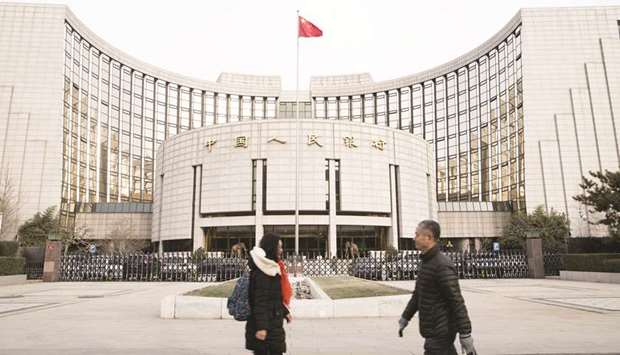China’s central bank said yesterday that it will ensure ample liquidity through targeted reserve requirement ratio (RRR) cuts for banks at an appropriate time, and will keep monetary policy prudent and flexible to support the economy.
China has announced a flurry of steps in recent weeks to shore up investor confidence and help keep smaller businesses afloat as the coronavirus epidemic severely disrupts economic activity.
Many analysts believe more support measures are likely soon as disruptions look set to extend well into the second quarter.
Recent surveys showed a third of the country’s smaller companies have only enough cash to last for a month, with another third believing they can hold out for two months.
The central bank will as far as possible reduce the impact of the epidemic so that economic goals for this year can still be achieved, Liu Guoqiang, vice governor of People’s Bank of China (PBoC), told a news conference in Beijing.
“We’ll further release the long-term liquidity via multiple open market operations,” Liu said, “And make targeted RRR cuts in appropriate time for banks that meet the requirement of releasing inclusive loans and serve the smaller firms.”
The central bank said on Wednesday it was releasing another 500bn yuan ($71.30bn) to banks to extend cheap loans to small and medium-sized enterprises, on top of 300bn yuan announced earlier this month for loans to companies that make health supplies such as masks and protective suits.
The PBoC will increase the re-lending and re-discount quota again if needed, and help the country’s smaller banks to replenish capital if they need more funds, Liu said, replying to questions about increasing borrowing needs.
Asked about whether the lending push could fuel credit risks, Liu said China will keep the macro leverage ratio and prices stable.
Authorities will make sure there will be no systemic financial risks, which is a red line, said Xiao Yuanqi, the chief risk officer of the China’s Banking and Insurance Regulatory Commission (CBIRC).
“Support policies are mainly for smaller firms facing difficulties because of the virus outbreak, not those in difficult situations before,” Xiao said.
“We’ll prevent non-performing companies from getting a free ride from the push, and prevent related moral hazard.” Data from China’s Industry and Information Technology Ministry showed only about 30% of China’s small and medium enterprises have resumed normal production, and officials are worried that many may have to start cutting jobs, putting additional pressure on the economy.
Small and mid-size firms account for over 80% of nationwide employment and over 60% of gross domestic product.
China’s banking sector may face a surge of up to 7.7tn yuan ($1.1tn) of non-performing loans (NPLs) in 2020 if the virus outbreak doesn’t peak until April, credit agency S&P Global estimated last week

Pedestrians walk past the People’s Bank of China headquarters in Beijing.

